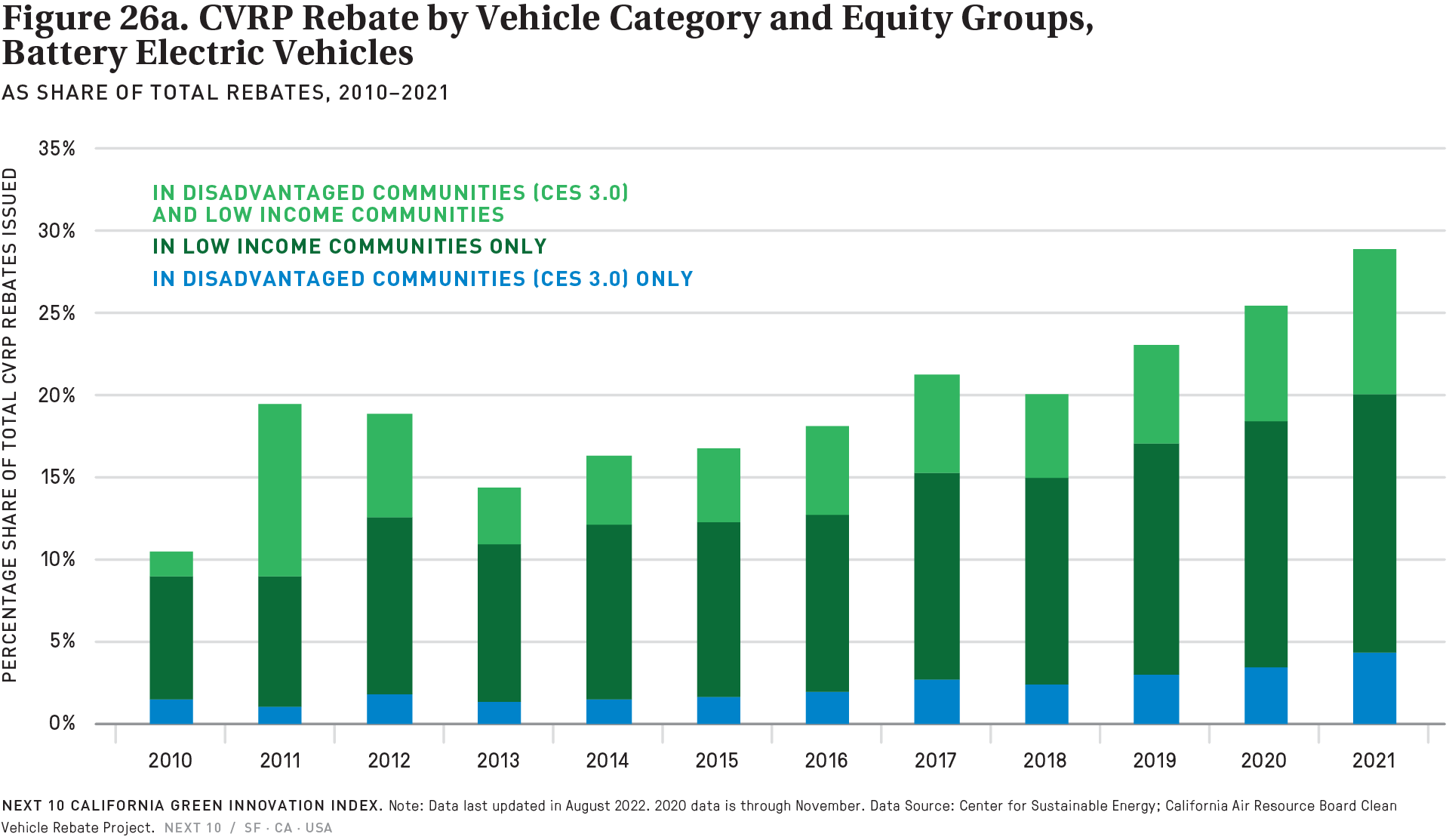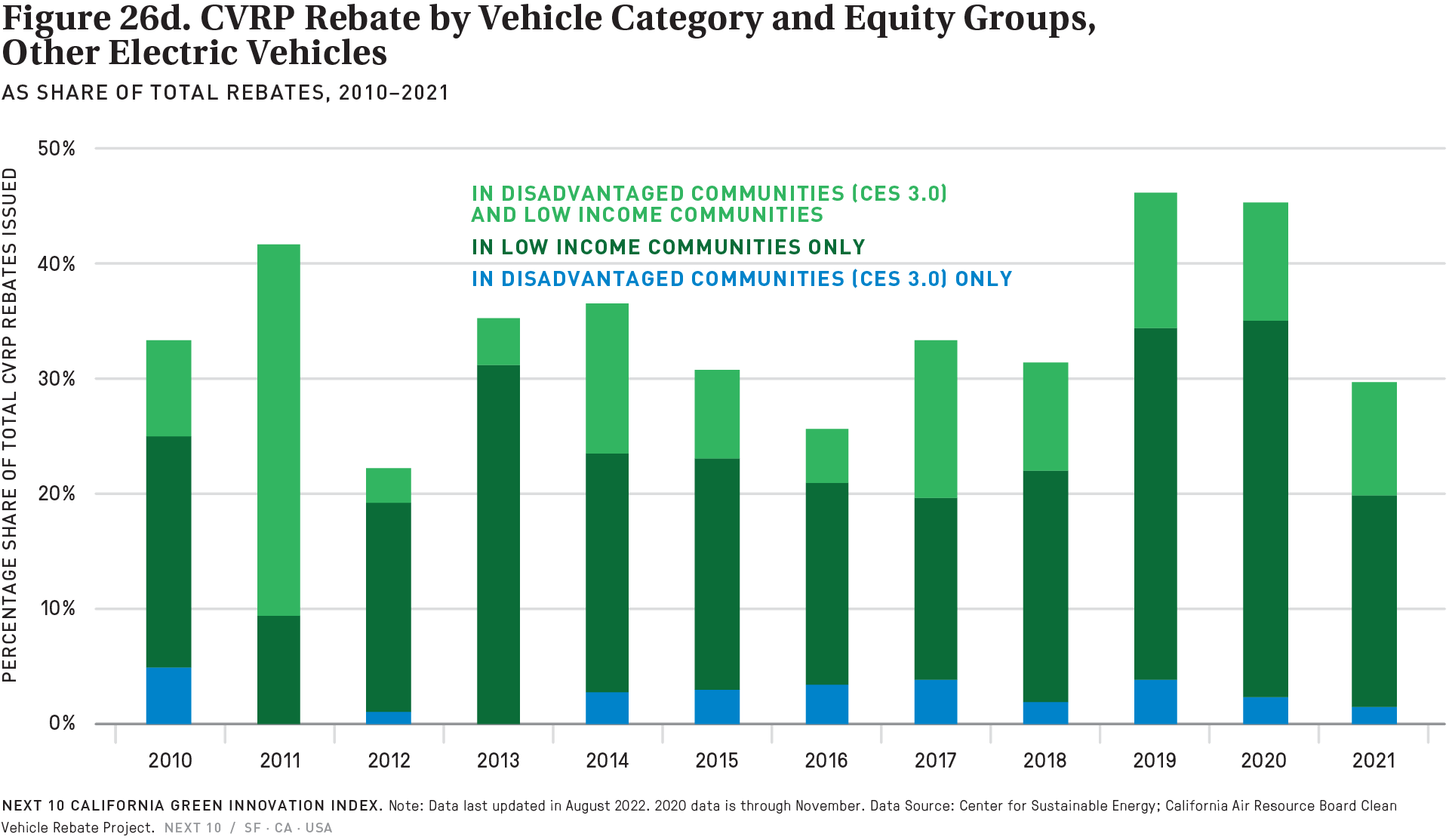Highlight
- By vehicle category, clean vehicle rebates claimed by traditionally underrepresented groups as a share of total rebates have been steadily increasing for fuel cell, battery, and plug-in hybrid, but not significantly. In 2021, clean vehicle rebates for battery EVs reached 27.7 percent. As electric vehicles become less expensive relative to equivalent internal-combustion engine vehicles (ICEVs)—along with increased rebate amount for households making below 400 percent of the federal poverty level—the shares are expected to continue increasing. California has proactively created policies that make clean transportation options accessible and practical for disadvantaged, low-income, and other priority communities that tend to lean towards heavy-duty trucks and low-cost fuel vehicles.
Opportunity
- Due to ongoing chip and battery storage challenges in the short term and soaring prices for battery manufacturing, such as lithium batteries, this could create an obstacle for continued strong EV sales.105 However, three companies are currently working to extract lithium from the Salton Sea in Southern California, which would ease supply constraints on battery production. They estimate that lithium output from the Salton Sea could reach 100,000 metric tons by about 2027, which is enough to power more than 500 million electric cars.106
105 IEA (2022), Electric cars fend off supply challenges to more than double global sales, IEA, Paris https://www.iea.org/commentaries/electric-cars-fend-off-supply-challenges-to-more-than-double-global-sales
106 Ohnsman, Alan. “California’s Lithium Rush For EV Batteries Hinges On Taming Toxic, Volcanic Brine. Forbes, August 31, 2022. Available at: https://www.forbes.com/sites/alanohnsman/2022/08/31/californias-lithium-rush-electric-vehicles-salton-sea/
More About
Transportation
Related Content




